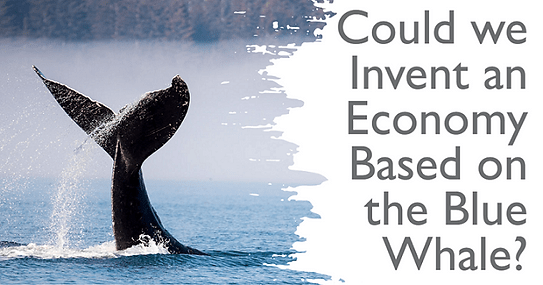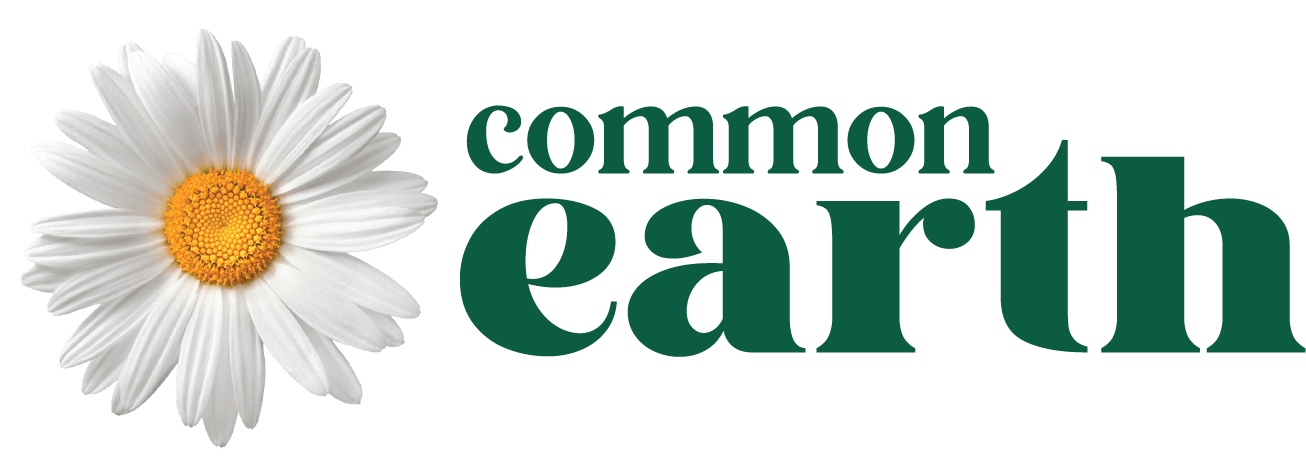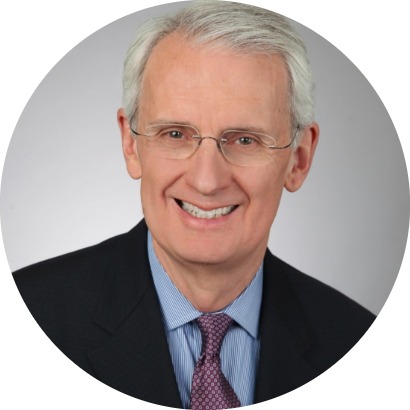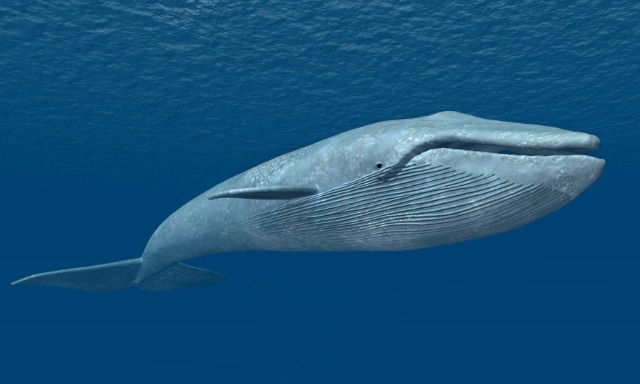1. Basic Services: Lessons from the Blue Whale
One of the things that marks our current socio-economic system is that it fails to distribute the benefits of society equitably. There are many results of this failure in that it keeps much of the population in a state of stress wondering how they will look after their families. The emerging society will need a different distribution system. To help us think about that we went to our biomimicry advisor, the Blue Whale.
The Blue Whale is the largest animal on Earth. It has been known to be as much as 30 meters (100 feet) long and weighing 200 or more metric tonnes. If you propped it up on its tail, it would be as high as a 10-story building. It weighs about the same as 85 mid-sized cars. To our knowledge, it is larger than any other animal that has ever existed. One of the fascinating things about the Blue Whale is that since it is a mammal it has the same circulatory system as other mammals. Like humans or tiny mice, mammals have a heart and an aorta which divides multiple times until the whole creature is served. Although the whale’s circulatory structure is the same as a mouse and although the heart and aorta are massive relative to those in a mouse, the individual capillaries that are the smallest arteries are about the same size as those in the mouse. This is because they need to be that size to feed individual cells and individual cells don’t vary much in size from one mammal to another.
-
Since weight is a pretty good determinant of the number of cells:
-
-
200 metric tons (440,000 lbs.) suggests 40,000 trillion cells.
-
That is 40,000,000,000,000,000 cells,
-
or 5,000,000 times the number of people on earth
-
Yet unlike the people on Earth, every one of those Blue Whale cells gets enough food.
-
The Blue Whale has mastered the distribution system.
-
-
Elements of the Blue Whale Circulatory System:
-
The purpose of the system is to sustain all the cells in the blue whale (keeps the whale in good operating condition)
-
The basic principle is to Optimize the Whole
-
Highly efficient lungs – extract many times the oxygen of land-based mammals.
-
A massive heart that sends blood to every cell
-
Heart has flexibility to have huge swings in beats/per minute as needed.
-
Because the Blue Whale is warm-blooded in water that conducts heat (27 x air) it needs large fat layer to reduce waste
-
Because its food source can be widely distributed it uses its fat as reserves for foodless exploration trips
-
Eats Krill – close to the bottom of the food chain Krill eat algae.
One of the things the Post-Carbon Caring Society will require is a distribution system as brilliant as the distribution system of the Blue Whale.

Elements of the Post-Carbon Caring Society System:
-
The purpose of the system is to sustain all the people and other species in the world (keeps the world in good operating condition)
-
The basic principle is to Optimize the Whole
-
Farmland owned by and governed by local communities.
-
Highly efficient crops focused on optimal human nutrition.
-
A food distribution system that provides for every person
-
Our distribution system will need to be highly flexible and local.
-
Because agriculture is a big source of the GHGs heating the planet we will need to reduce waste and move to regenerative agriculture
-
Because the food source can be disturbed by drought or flood, have large reserves for ready distribution.
-
We will need to eat closer to the bottom of the food chain by reducing large animal protein.
2. A Shift in Self-Concept: Our Thoughtware Needs Updating.
In the Common Earth courses a large amount of time is spent understanding how systems work. A system is a collection of parts that relate to each other to function as a whole. Human bodies have many systems such as the circulatory system, the immune system, the eyes, and many more. Each of those systems works together as parts of our whole body. But our bodies also require many other factors to interact to maintain life. Air, water, food, and temperature are each required in specific amounts to maintain human life. Similarly, other parts of the global system come together to create the possibility of more life. And the earth is part of a solar system which is part of a galaxy which is part of a group of galaxies which are part of grand filaments of galaxies which are part of the whole universe. So, the universe is a massive network of interdependent parts with every part affecting every other part. Our way of thinking, that is our self-concept as being separate from the larger network, is precisely what is destroying that network and the ability of all species to continue living.
The last time there was a major shift in self-concept was when Copernicus published his findings that the earth moves about the sun. Until Copernicus, the general understanding was that the sun and stars moved around the Earth. Copernicus kicked off the Scientific Revolution, that gave rise to massive changes in society and the Industrial Revolution which was then levered up with fossil fuels to create the modern age.
Copernicus did not start out to shift our self-concept. However, the understanding that the earth was special and stood at the center of things was rocked by his demonstration that the earth was not central. And once that was understood, the medieval concept of the Great Chain of Being where kings and popes were God’s appointed, collapsed. The Scientific Revolution had been born and the Age of Enlightenment brought new ideas of personal freedom and liberalism. The concept of the “I” that arose after Copernicus was one where that little “I” had ownership. I “have” two feet. “My” hand hurts. “My” house. “My” property. Ownership was central. Macpherson calls the self-concept that arose “Possessive Individualism.” It came with the Scientific Revolution (1543-1687). Both Locke (1632 -1704) and Hume (1711-1776) contributed to the new understanding.
The coming age will also come with a major new understanding. Niels Bohr (1885-1962) and his colleagues made a radical shift in our understanding of the universe and therefore of ourselves. When they enunciated the theory of quantum mechanics, they described a universe much weirder than we would expect from our firsthand knowledge.
Two worlds – In Copernicus’ world, people could “see” that the sun moved around the earth so that is what they believed. In our world, we have seen the world as interacting competing parts and we have missed the aspect of the universe where all those interacting parts, including ourselves, are part of a larger whole.
And just like with Copernicus, the Bohr understanding is creating a massive shift in our self-understanding. In effect, there is only one thing going on here and it is the big bang. All the particles in the universe are related. (To see a little piece of the science here check out Dr. Ben Miles YouTube channel and his small lecture, “The universe is not locally real.”) They call it the concept of “entanglement.” In systems thinking terms one would say, “You can’t just do one thing.”
In an article on entanglement in October 2022, Scientific American, author Daniel Garisto opened with the following explanation of the concept:
One of the more unsettling discoveries in the past half-century is that the universe is not locally real. In this context, “real” means that objects have definite properties independent of observation – an apple can be red even when no one is looking. “Local” means that objects can be influenced only by their surroundings and that any influence cannot travel faster than light. Investigations at the frontiers of quantum physics have found that these things cannot both be true. Instead, evidence shows that objects are not influenced solely by their surroundings, and they may also lack definite properties prior to measurement.
The demonstration of entanglement won the 2022 Nobel Prize in Physics for three physicists: John Clauser, Alain Aspect and Anton Zeilinger. In such a universe the concept of the “I” shifts from one that resides in the head behind the eyes to one that is expansive to the point of being a part of a much bigger whole – the universe.
When Hubble first saw that other galaxies were moving away from us – a phenomenon that led to understanding the universe had a beginning – he was confused because galaxies were moving away from us in all directions. He also observed that more distant galaxies were moving away faster. If everything else was moving away from us did it mean that Earth or our galaxy, the Milky Way, was the center of the universe? He then realized that wherever you stand in the universe it will seem that everything is moving away from you. This is because at the big bang all the energy was at a single point. Even now we are all subsystems in a giant system called the Big Bang.
The new thinking that comes with Bohr on the one hand and with Systems Thinking on the other is the concept of agency instead of ownership. And agency in this new understanding is not to be able to “acquire” in order to use possessions to acquire more. This agency is embodied in vast systems of life and eventually in the universe as a whole. Action, learning, understanding – all activity is social. Who I am is, in the first instance, part of the whole. In the medieval world the “I” had a place in a hierarchy that described the whole and circumscribed agency. One did not challenge one’s assigned place. That understanding was replaced by a world where agency of the individual was tied to one’s role in “the Market.”
The Third World – In the Bohr world the agency is played out in the community of all beings – plant, animal, and mineral. Agency arises when the life of the whole flows through us and back in a circle of reciprocity.
D.H. Lawrence was born 34 days before Bohr. Here is his poetry that talks about this understanding of life flowing through us.
SONG OF A MAN WHO HAS COME THROUGH
Not I, not I but the wind that blows through me!
A fine wind is blowing the new direction of Time.
If only I let it bear me, carry me, if only it carry me!
If only I am sensitive, subtle, oh, delicate, a winged gift!
If only, most lovely of all, I yield myself and am borrowed
By the fine, fine wind that takes its course through the chaos
of the world
Like a fine, an exquisite chisel, a wedge-blade inserted;
If only I am keen and hard like the sheer tip of a wedge
Driven by invisible blows,
The rock will split, we shall come at the wonder, we shall find the
Hesperides.
Oh, for the wonder that bubbles into my soul,
I would be a good fountain, a good well-head
Would blur no whisper, spoil no expression
What is the knocking?
What is the knocking at the door in the night
It is somebody wants to do us harm.
No, no, it is the three strange angels.
Admit them, admit them.
D.H. Lawrence 1885-1930
What does a society look like when we see ourselves primarily as part of a whole? That is not an easy question because the universe has a habit of not showing its hand before it does the next great thing. But remember we are in a climate crisis because we have operated with an understanding that everything will work out if we just operate with self-interest. And the self in that sentence is the old, isolated individual. In the new world we will no longer be blind to the web of life that sustains us if we sustain it. We will welcome the “fine wind…blowing the new direction of Time.”
© 2023 – David Patterson – All rights reserved.


